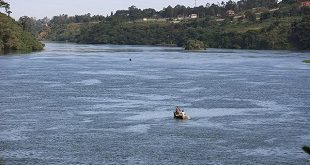 ca
ca
A U.S$100 billion bond could be used to help guarantee financing for major regional infrastructure projects such as the East Africa Railway
By Nancy Birdsall and Ngozi Okonjo-Iweala
The countries of Sub-Saharan Africa have reached a critical juncture. Strained by a collapse in commodity prices and China’s economic slowdown, the region’s growth slipped to 3.4% in 2015 – nearly 50% lower than the average rate over the previous 15 years. The estimated growth rate for 2016 is lower than the population growth rate of about 2%, implying a per capita contraction in GDP.
Sustained economic growth is essential to maintain progress on reducing poverty, infant mortality, disease, and malnutrition. It is also the only way to create sufficient good jobs for Africa’s burgeoning youth population – the fastest growing in the world. As Gerd Müller, Germany’s development minister, noted at a recent press conference, “If the youth of Africa can’t find work or a future in their own countries, it won’t be hundreds of thousands, but millions that make their way to Europe.”
One way to sustain growth and create jobs would be to collaborate on planning and implementing a massive increase in infrastructure investment across Africa. Public infrastructure is particularly important. This includes highways, bridges, and railways linking rural producers in landlocked countries to Africa’s urban consumers and external markets; mass transit and Internet infrastructure to accommodate greater commercial activity; and electricity transmission lines integrating privately financed power plants and grids.
Major regional projects are also needed to knit together Sub-Saharan Africa’s many tiny economies. This is the only way to create the economies of scale needed to increase the export potential of African agriculture and industry, as well as to reduce domestic prices of food and manufactured goods.
While governments in Africa are spending more on public infrastructure themselves, outside finance is still required, especially for regional projects, which are rarely a top priority for national governments. Yet aid from Africa’s traditionally generous foreign donors, including the United States and Europe, is now set to shrink, owing to political and economic constraints.
But there may be a solution that helps Africa to recover its growth in a way that Western leaders and their constituents find acceptable. We call it the “Big Bond” – a strategy for leveraging foreign aid funds in international capital markets to generate financing for massive infrastructure investment.
 The Independent Uganda: You get the Truth we Pay the Price
The Independent Uganda: You get the Truth we Pay the Price





